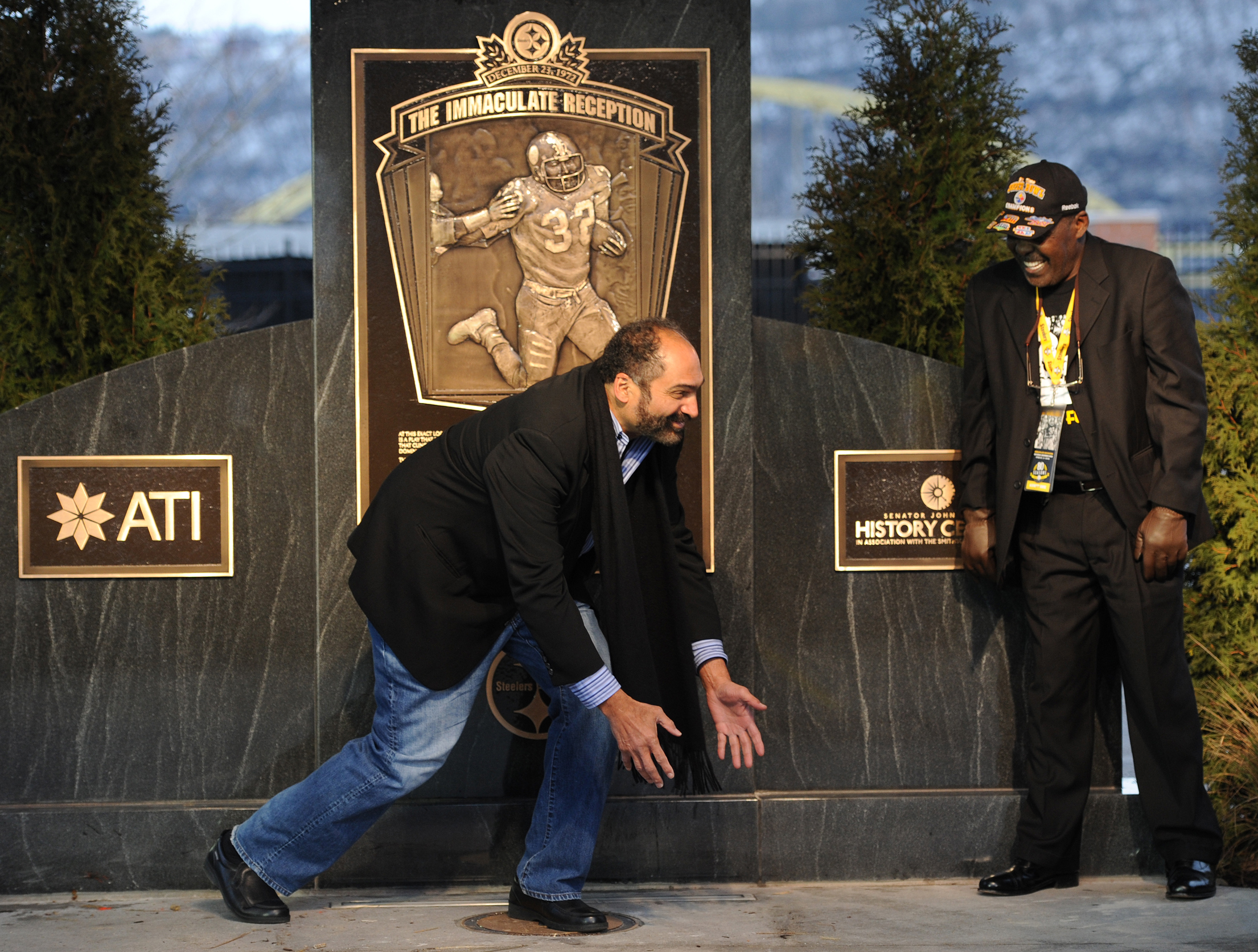Pittsburgh is so rich in sports history that you can find yourself waist deep in it almost by accident; you could right now, for example, be standing on the spot where Bruno Sammartino wrestled an orangutan. But here are five places you should find yourself on purpose.

Forbes Field wall
Forbes Field is the place where dead center was 457 feet from home plate, and it still is. You can still stand at that very wall, tucked into the sprawling urban campus that is the University of Pittsburgh in Oakland, and still read the white paint on red brick that says 457, but dead center is still dead. When you turn to face a ghostly batter, you’ll find only concrete and traffic now, but put your back to the wall and feel the permanent reminder of the momentous Forbes Field baseball played by the Pirates and the Homestead Grays (not to mention the slightly less momentous football of the pre-greatness Steelers). If you walk to your left some 90 feet, you’ll find another dimensional marker, this one reading 436 feet, and you’ll wonder how a ballpark so spacious could even entertain home runs of a decent frequency. But oh, my it did. Babe Ruth’s final three homers, all hit in the same game, sailed over the extensions of these walls, as did the most famous homer in World Series history, Bill Mazeroski’s ninth-inning Game 7 game-winner on Oct. 13, 1960, against the Yankees. If you still need to stand where Maz stood in the moment before that date chiseled itself into history, enter Wesley W. Posvar Hall off Clemente Drive. Home plate is still there.
Clemente Museum
Long before there were Steelers bars and Terrible Towels and Lambert jerseys, Pittsburgh’s sports hagiology was centered around Roberto Walker Clemente. You need an appointment to tour the Clemente Museum in Lawrenceville, because this is serious stuff. Clemente’s life is celebrated here like nowhere else, and though it’s a baseball story, the Great One’s mission was social justice, a point made so indelibly and from so many sources within these walls.
Immaculate Reception marker
Did you know that Franco Harris had only one foot? Yeah, little known fact. Find the little shrine along General Robinson Street on the North Shore marking “the exact spot” at which Harris caught what soon became known as the Immaculate Reception, the most famous play in NFL history. In an ambitious attempt to explain everything about it, this rather ornate display has managed to become quirky in spite of itself. Note the spot on which you can put your left foot exactly where Harris’ was at the end of the Dec. 23, 1972, playoff game against the Oakland Raiders, and go ahead, wonder aloud where his other foot was, because it’s not memorialized anywhere around here. Additional quirks are a short walk toward the Allegheny River. Note the historical marker commemorating the first professional football game and the $500 Pudge Heffelfinger got paid on Nov. 12, 1892, to play for the Allegheny Athletic Association against the Pittsburgh Athletic Club.
PNC Park
Tours of PNC Park commonly get rave reviews, but don’t vacate the place without having reached its zenith, where the aesthetics that make this a singular baseball vista are best realized. Tours have included the press box, but you can achieve the same effect from most upper-deck regions along the third-base line, a spectacular canvas that includes the boats on the Allegheny and the contours of the urban skyscape on its far shore. Pittsburghers consider this the most beautiful ballpark in America, and, no, we don’t have to visit even a handful of the others to be dead certain about it.
Western Pennsylvania Sports Museum
Inside the Senator John Heinz History Center in the Strip District you’ll find the best opportunity to appreciate the full scope of sports history in Pittsburgh. Hence the term. Crammed with artifacts from the city’s bulging catalog of championships, the exhibits hold everything from Franco Harris’ Super Bowl ring to Mario Lemieux’s Stanley Cup sweater to the particulars on titles even we’ve forgotten that we won.



Comments
Login Register Logout